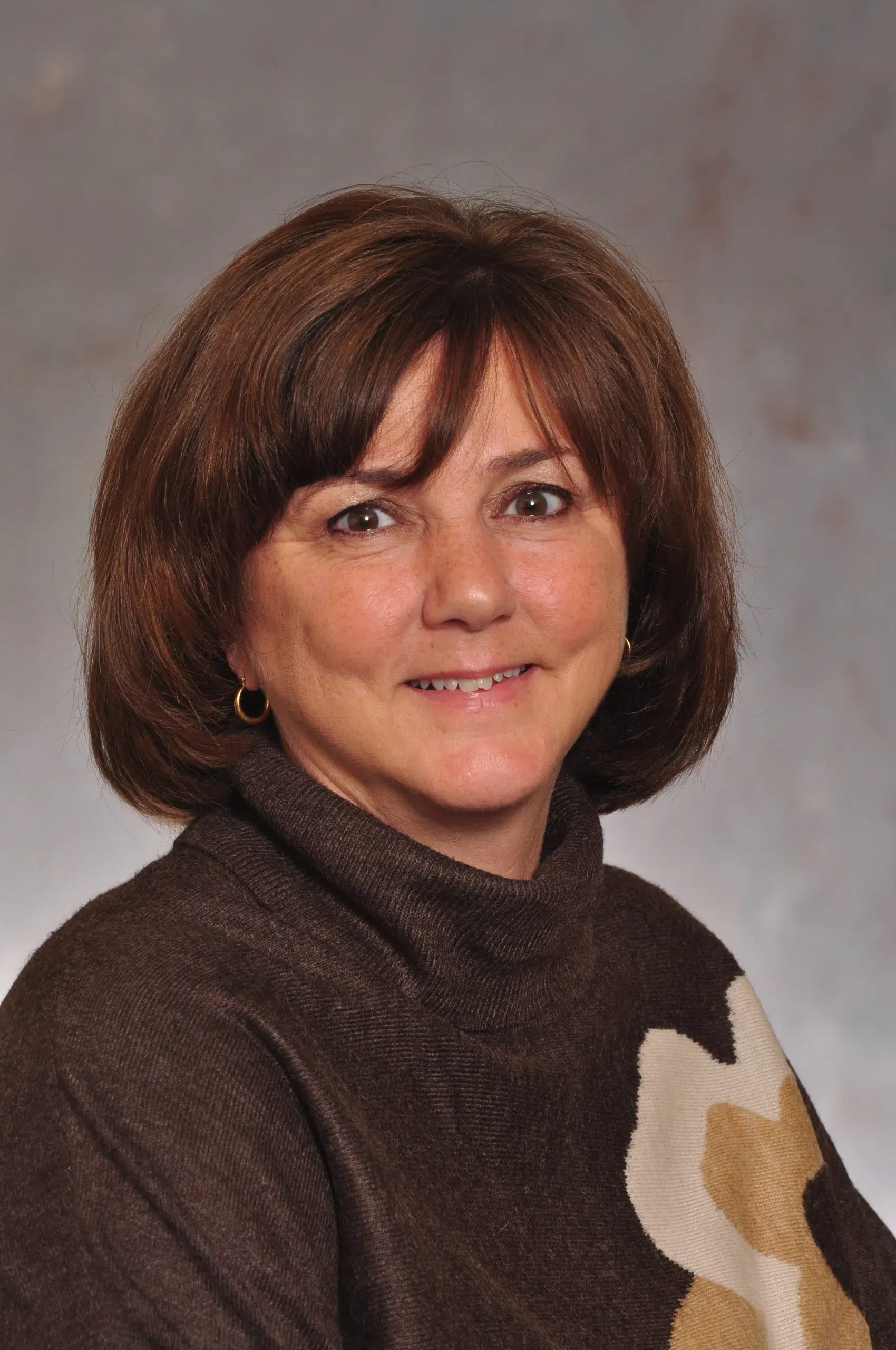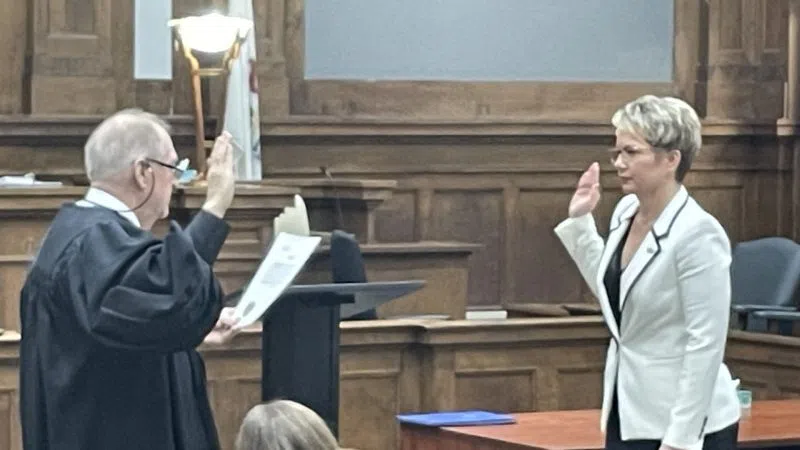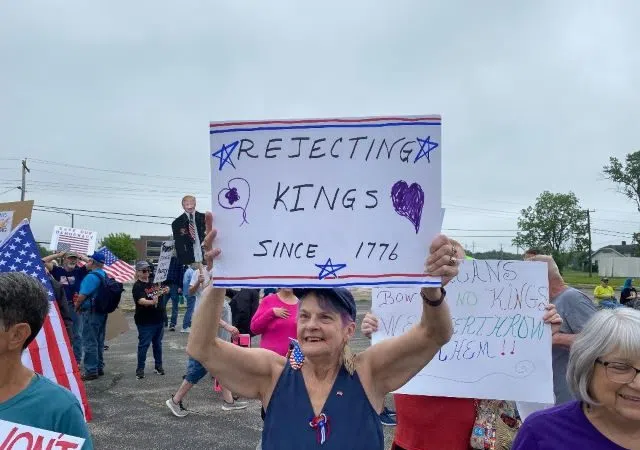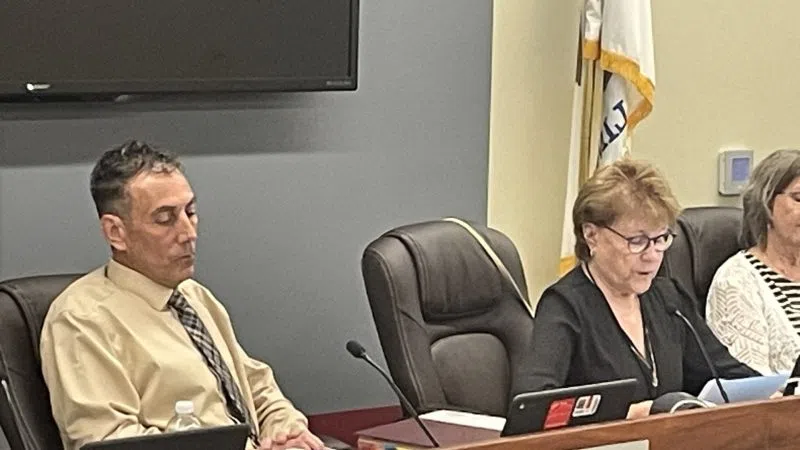THE FOLLOWING STORY IS AN OSF RELEASE
May is stroke awareness month. OSF patient Laura Williams is proof that all strokes should be taken seriously.
Key takeaways:
- Big or small, all strokes should be taken seriously. Know the acronym BEFAST. If you have problems with your balance, eyes, face, arms or speech, it’s time to call 9-1-1.
- Stroke prevention involves a healthy lifestyle and regular visits to your primary care provider.
Laura Williams, a community college administrator turned radio host in Danville, Illinois, is all about educating the public about staying healthy. Each May to mark Stroke Awareness Month, Williams would interview Leslie Ingold, RN, a regional stroke navigator at OSF HealthCare.
The advice from Ingold was well known but important: know your stroke risk factors, and if you have stroke symptoms, get to the hospital right away.
But what Williams didn’t know is that she would soon use the information from those interviews to save her life.
“If it wasn’t for that interview, I don’t know what it would have turned into,” Williams says.
Williams’ story
The 63-year-old Williams remembers one day in March of 2024 when she woke up dizzy.
“My left side was a little off kilter. I thought ‘This is strange. I’m feeling kind of weird. What’s wrong with me?’,” Williams recalls. “I thought I just better lay back down. I just didn’t feel good.
“I started to lay back down, and an interview popped into my mind. I had interviewed Leslie Ingold about strokes. What she said kept running through my mind: do not go to sleep. Do not go back to bed. That’s the worst thing you can do if you’re having a stroke,” Williams adds.
Williams says she woke her husband and said, “I think I’m having a stroke.” The pair got to OSF HealthCare Sacred Heart Medical Center in Danville, where doctors determined she had a small ischemic stroke.
What to know about ischemic strokes
Ingold says an ischemic stroke can occur when a blood clot breaks off from any part of your body, travels to your brain and obstructs the brain’s blood vessels. That’s opposed to a hemorrhagic stroke, where blood comes out of a brain vessel due to a leak or burst.
Is a small ischemic stroke like Williams’ common?
“Everybody’s different. Everybody’s brain is different. So it’s hard to really say what a normal stroke looks like,” Ingold says. “[The severity] also depends on how quickly you recognize the symptoms and get to the hospital. If you can get here quicker, that could be less damage.”

“Everybody’s different. Everybody’s brain is different. So it’s hard to really say what a normal stroke looks like. [The severity] also depends on how quickly you recognize the symptoms and get to the hospital. If you can get here quicker, that could be less damage.”
Time is brain, in other words. So, remember the acronym BEFAST. If you notice irregularities with your balance, eyes, face, arms or speech, it’s time to call 9-1-1. And, talk to younger people in your life about those signs. Ingold says strokes aren’t just an old person thing. She’s seeing more people in their 30s, 40s and 50s come to the hospital with stroke symptoms.
“The brain has something called neuroplasticity,” Ingold adds. “So the quicker you can start physical, occupational or speech therapy [after a stroke], it impacts those brain neurons. We don’t always get them back, but the brain can sometimes remember how to get your strength back.”
Prevention
Some risk factors for stroke, like your family history of health issues, are unchangeable. But you can spin that into things you can control.
“You can check in with your primary care provider and see how best to fix things,” Ingold says. “Do you need to lose weight? Do you need to eat a better diet? Medication? Exercise? You can watch your blood pressure and diabetes. Small amounts of walking. Walk in your home in the winter months. Do some arm exercises with water bottles or cans of food. All that makes a difference.
“And the most obvious modifiable risk factor is smoking or vaping. We see a lot of patients with a history of vaping. Smoking and vaping are equally bad for you. We encourage you to stop. If you need help, talk to your primary care provider about products to help you stop,” Ingold adds.
Williams today
After a three-day hospital stay, Williams went home with no long-term deficits. She’s now preaching stroke prevention through a healthy diet, active lifestyle, knowing your body and more. For one, Williams now wears a medical alert bracelet. It contains her health information if she’s stricken and can’t talk. She’s also put that information on her refrigerator so her grandchildren will know what to do in an emergency.
Plus, Williams wants others to be empowered, not embarrassed, to go to the hospital with a possible stroke. The mindset of “I felt bad earlier, but I feel fine now. I’ll just waste their time.” is not the way to go, she says.
“I never knew that one of my radio shows might end up saving my life. Or end up saving me from something like paralysis,” Williams says. “I really feel like that conversation with Leslie saved my life and made a difference in my outcome.”

“I never knew that one of my radio shows might end up saving my life. Or end up saving me from something like paralysis. I really feel like that conversation with Leslie saved my life and made a difference in my outcome.”
Says Ingold: “I’m very thankful Laura had us on her show. I’m so thankful she listened. I’m so thankful that when we have an audience, they listen. It might not affect them today, tomorrow or even next year. But the fact that they’ve heard it and remember it makes all the difference in the world.
“If I can be a part of that, that makes my heart warm,” she says.
Learn more
Read more about how health care providers prevent and treat strokes on the OSF HealthCare website.












